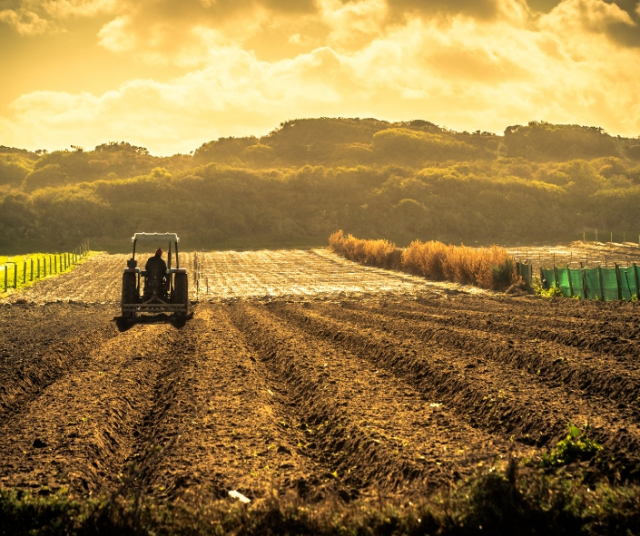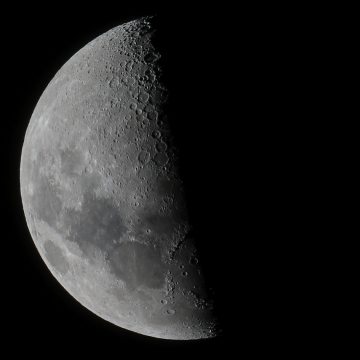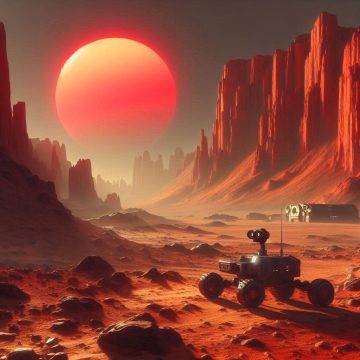The Moon, mysterious and constant in its cosmic dance around the Earth, has been a source of fascination and admiration since time immemorial. But beyond its beauty, the Moon plays a crucial role in life on Earth, especially in the field of agriculture. This article explores the intricate relationship between lunar phases and agriculture, a connection that has guided planting, harvesting cycles, and agricultural traditions throughout human history.
The Moon Phases: A Celestial Ballet:
Before we dive into the specific relationship with agriculture, it is essential to understand the lunar phases and how the Moon goes through different stages in its orbit around the Earth. From the new Moon, when it is not visible from Earth, to the full Moon, when its disk is completely illuminated, these phases affect the amount of light we receive from the Moon during the night.
The Influence of the Moon on Earth:
The Moon exerts a gravitational force on the Earth, a phenomenon that is particularly evident in ocean tides. But this influence is not limited to water; It also affects the moisture in the soil and, therefore, directly impacts agriculture. The connection between lunar phases and water on earth has been observed for centuries by farmers who have noticed patterns in plant growth in relation to different phases of the Moon.
Sowing and Harvesting in Tune with the Moon:
One of the most notable aspects of the relationship between lunar phases and agriculture is the planning of planting and harvesting. In many cultures, farmers have followed lunar calendars to determine when to plant different crops. The phase of the Moon, according to popular belief, can affect the development of plants, influencing aspects such as root growth, seed germination and fruit ripening.
New Moon: A Fertile Beginning:
On the new Moon, when the illuminated side of the Moon is far from Earth, some farmers consider it a good time to plant crops that bear fruit above the ground. Lunar energy during this period is believed to promote upward growth, which can benefit crops such as leafy green vegetables.
Crescent Quarter: Accelerated Growth:
During the first quarter, the Moon is in a position where the light gradually increases. This period is associated with a boost of energy that promotes rapid growth. Some farmers choose to grow crops that require rapid development, such as cereals and legumes.
Full Moon: Maximum Energy:
The Full Moon, when the Moon is completely illuminated, is considered a time of maximum lunar energy. Some farmers believe that this phase is conducive to crops that benefit from the fullness of moonlight, such as fruits and tubers.
Last Quarter: Preparation for Rest:
As the Moon enters its last quarter phase, some farmers consider it the right time for activities that involve pruning, soil preparation, or harvesting crops intended for long-term storage.
Cultural Beliefs and Myths:
The relationship between the lunar phases and agriculture is not only practical, but has also given rise to a rich tradition of myths and beliefs. In various cultures, the Moon has been personified as an entity that directly influences the fate of crops. These myths often reflect the deep connection that agricultural communities feel with the cosmos and nature.
The Science behind the Tradition:
While many of the traditional beliefs and practices related to lunar phases and agriculture have been passed down through generations, modern science has attempted to shed light on these phenomena. Studies have examined the relationship between lunar phases and plant growth, although results are often mixed and depend on factors specific to each crop and region.
Scientific studies:
Numerous studies have addressed the question of whether lunar phases have a significant impact on plant growth and agriculture in general. Some research has suggested that moonlight can influence seed germination and plant growth, while other studies have found less conclusive results. The complexity of agricultural ecosystems and the variability in cultivation methods make it difficult to establish direct correlations.
Moonlight and Photojournalism:
One of the key concepts in the relationship between the Moon and agriculture is photoperiodism, which refers to how the duration of light during the day affects plant growth. Although moonlight is significantly dimmer than sunlight, some studies suggest that certain plants may be sensitive to variations in lunar brightness. However, the magnitude of this impact compared to other factors, such as sunlight and soil conditions, is still under debate.
Lunar Gravity and Soil Moisture:
Another area of research focuses on the influence of lunar gravity on soil moisture. Variations in the Moon's gravitational pull have been observed to affect the tides and can therefore influence water uptake by plants. However, the magnitude of this effect and its practical relevance in agriculture are subject to greater scrutiny.
Regional Factors and Local Variables:
The inherent complexity of agriculture, which varies across regions, crop types, and local agricultural practices, complicates the task of generalizing the impacts of lunar phases. What may be true for a crop in one specific region may not apply the same way in another. Variability in soil conditions, climate, and agricultural techniques introduces numerous variables that challenge the creation of universal conclusions.
Contemporary Perspectives:
In the modern era, where advanced technology and science are within reach, some farmers have begun to question the validity of practices based on moon phases. However, there are agricultural communities that continue to follow traditional methods based on the observation of the Moon and the oral transmission of knowledge.
Technology and Precision Agriculture:
Modern agriculture benefits greatly from technology, with precision agriculture using satellite data, sensors and algorithms to optimize agricultural processes. These approaches based on objective data often conflict with traditional methods, such as observing moon phases. However, some farmers have taken a pragmatic approach, integrating technology to improve efficiency without completely discarding tradition-based practices.
Climate Change and Sustainability:
The climate crisis has led to greater awareness about the importance of sustainable agricultural practices. In this context, attention has focused on methods that reduce environmental impact and promote resilience in the face of changing climate conditions. Traditional practices can be reconsidered and adapted based on their effectiveness and their alignment with sustainability objectives.
Education and Communication:
As farming communities face the reality of an ever-changing world, education and communication play a crucial role. It is essential to provide farmers with accurate, evidence-based information to make informed decisions about their practices. At the same time, traditional knowledge must be respected and preserved, recognizing its cultural and social value.
The relationship between lunar phases and agriculture is a fascinating chapter in the interconnection between man and the cosmos. Although some may see these practices as superstitions of the past, the reality is that these traditions have sustained communities throughout history, guiding their agricultural decisions and setting rhythms in tune with nature.
The cosmic dance between the Earth and the Moon continues, and although modern science can explain many of the related phenomena, tradition and ancient observation continue to play a role in the way we farm the land. Ultimately, the relationship between lunar phases and agriculture is a lasting testament to the human ability to find patterns and meaning in the vast canvas of the universe around us. The Moon, with its silver light and silent influence, continues to witness the eternal dance between earth and sky, where today's harvest and tomorrow's sowing are in constant harmony with the lunar orbit.






